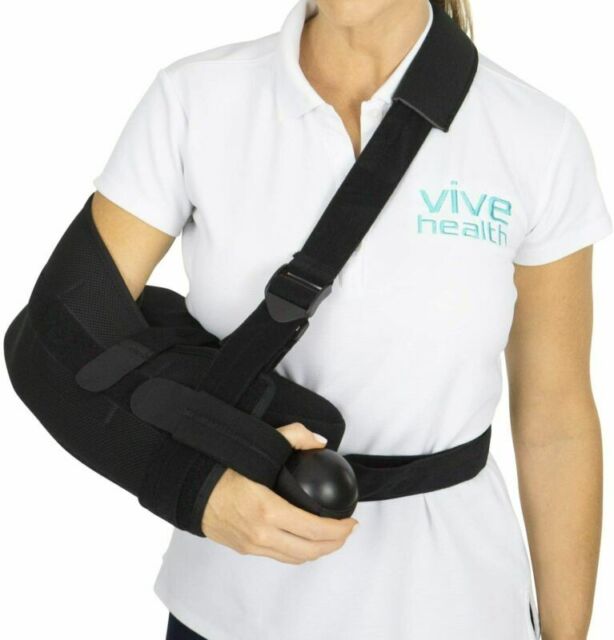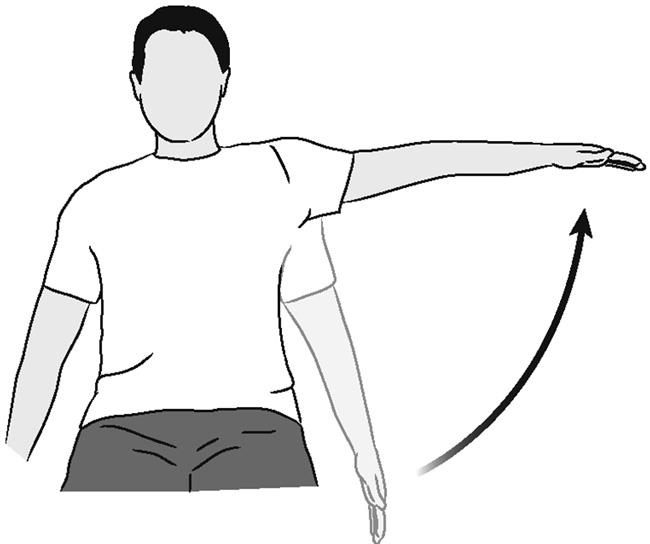
Range of motion exercises are gradually incorporated after the sling is no longer being used. To prevent this from occurring early protected motion is a primary treatment goal if the sprain is not severe. However, overuse of the sling can cause problems with excessive fibrosis and development of adhesive capsulitis. An arm sling is routinely used to keep the area relatively immobile so the ligament can heal properly. Ice and NSAIDs are used as anti-inflammatory treatments for mild sprains. The primary goal in treating a ligament sprain is to protect the joint against excess motion and to help the damaged ligament tissue heal. Leon Chaitow ND DO, in Orthopedic Massage (Second Edition), 2009 Traditional approaches Excessive flexion or rotation can occlude the vertebral artery if it is very dominant on one side, causing potential brainstem ischemia and injury, and should therefore be avoided. Rotating toward the surgeon in the axial plane helps with viewing of the brainstem, whereas rotating away from the surgeon facilitates visualization of the internal auditory canal (IAC) ( Fig. The head can be bent toward the floor in the coronal plane to open the space between the head and the shoulder and thereby provide maximum operative space. Excessive flexion in the sagittal plane should be avoided to prevent airway compromise (at least two fingers' breadth between the chin and the sternum).

There are also three axes of potential movements in position as described previously. For procedures longer than 4 hours, the arm can be placed off the bed in an arm sling, whereas an axillary roll can be placed under the dependent axilla for shorter cases. The lateral position is typically used for petrosal or posterior fossa lesions located away from the midline. Sekhar, in Principles of Neurological Surgery (Fourth Edition), 2018 Lateral Position

In adults, a permanent visible prominence over the fracture site is common, and they should be apprised of this likely outcome. This usually completely remodels and disappears in children but persists to some extent in adults because of relatively less remodeling. Within several weeks, a visible “bump” (healing callus) may occur at the fracture site. After immobilization, shoulder ROM and strengthening exercises speed recovery. Patients who have sling immobilization should be instructed to perform elbow range of motion (ROM) exercises to maintain normal function. During the period of immobilization, the patient may use the extremity as symptoms allow, but strenuous activities should be avoided. Repeat radiographs of these fractures are not necessary at each return visit, but a final radiograph when clinical union is achieved is helpful to assess callus formation. The usual healing time for this fracture is 3 to 6 weeks in children and 6 to 12 weeks in adults. Radiographic union progresses more slowly than clinical union and may not be present for 12 weeks. Clinical union has occurred when the fracture site is painless and the patient can move the arm fully without discomfort. Follow-up visits should occur 1 to 2 weeks after injury to assess clinical symptoms and then every 2 to 3 weeks until the patient is asymptomatic.

Immobilization in the figure-of-eight bandage or arm sling should be continued until crepitus resolves and tenderness at the fracture site is minimal or absent. In Fracture Management for Primary Care (Third Edition), 2012 Follow-up Care


 0 kommentar(er)
0 kommentar(er)
